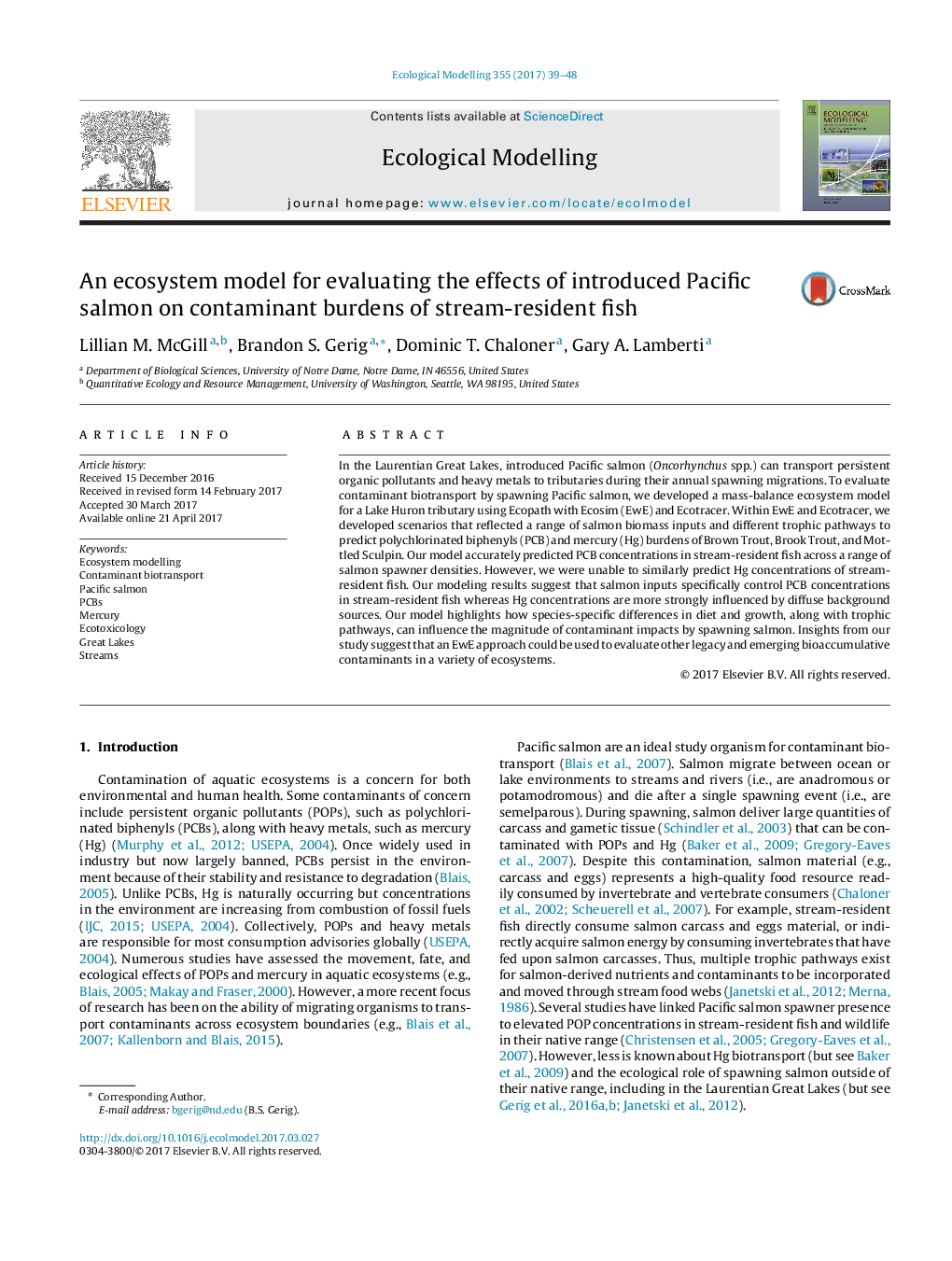| کد مقاله | کد نشریه | سال انتشار | مقاله انگلیسی | نسخه تمام متن |
|---|---|---|---|---|
| 5742106 | 1617392 | 2017 | 10 صفحه PDF | دانلود رایگان |
- Pacific salmon can transport persistent organic contaminants and heavy metals to streams.
- We developed an ecosystem model to assess salmon contaminant biotransport.
- Our model accurately predicted PCB concentrations in resident fish.
- PCB concentrations in resident fish were strongly controlled by salmon PCB inputs.
- Our model was unable to accurately predict Hg concentrations in resident fish.
- Hg levels appeared to be controlled by background sources.
- Life history and diet contribute to patterns of bioaccumulation.
- Ecosystem models may be useful for managing biotransported contaminants.
In the Laurentian Great Lakes, introduced Pacific salmon (Oncorhynchus spp.) can transport persistent organic pollutants and heavy metals to tributaries during their annual spawning migrations. To evaluate contaminant biotransport by spawning Pacific salmon, we developed a mass-balance ecosystem model for a Lake Huron tributary using Ecopath with Ecosim (EwE) and Ecotracer. Within EwE and Ecotracer, we developed scenarios that reflected a range of salmon biomass inputs and different trophic pathways to predict polychlorinated biphenyls (PCB) and mercury (Hg) burdens of Brown Trout, Brook Trout, and Mottled Sculpin. Our model accurately predicted PCB concentrations in stream-resident fish across a range of salmon spawner densities. However, we were unable to similarly predict Hg concentrations of stream-resident fish. Our modeling results suggest that salmon inputs specifically control PCB concentrations in stream-resident fish whereas Hg concentrations are more strongly influenced by diffuse background sources. Our model highlights how species-specific differences in diet and growth, along with trophic pathways, can influence the magnitude of contaminant impacts by spawning salmon. Insights from our study suggest that an EwE approach could be used to evaluate other legacy and emerging bioaccumulative contaminants in a variety of ecosystems.
Journal: Ecological Modelling - Volume 355, 10 July 2017, Pages 39-48
